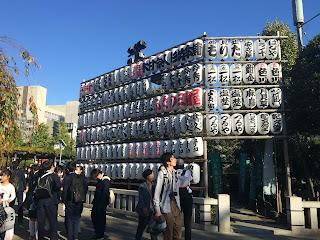Origins of the Samurai:
The samurai, a class of highly skilled warriors, gradually developed in Japan
after the Taika reforms of 646 CE. The reforms included land
redistribution and heavy new taxes, meant to support an elaborate
Chinese-style empire. As a result, many small farmers had to sell their
land and work as tenant farmers.
Meanwhile, a few large landholders amassed power and wealth, creating a feudal system similar to medieval Europe's. As in Europe, the new feudal lords needed warriors to defend their riches. Thus, the samurai warrior (or "bushi") was born.
Early Feudal Era Samurai:
Some
samurai were relatives of the landowners, while others were simply
hired swords. The samurai code emphasized loyalty to one's master, even
over family loyalty. History shows that the most loyal samurai were
usually family members or financial dependents of their lords.
In the 900s, the weak emperors of the Heian Era (794-1185) lost control of rural Japan.
The country was riven by revolt; the emperor soon
wielded power only within the capital. Across the country, the warrior
class moved in to fill the power vacuum. By 1100, the samurai
effectively held both military and political power over much of Japan.
Rise of Samurai Rule:
The
weak imperial line received a fatal blow to its power in 1156, when
Emperor Toba died without a clear successor. His sons, Sutoku and
Go-Shirakawa, fought for control in a civil war called the Hogen
Rebellion (1156). In the end, both would-be emperors lost; the imperial
office lost all its remaining power.
During this civil war, the
Minamoto and Taira samurai clans rose to prominence. They fought one
another in the Heiji Rebellion (1160). After their victory, the Taira
established the first samurai-led government. The defeated Minamoto were
banished from the capital at Kyoto.
Kamakura Period:
The two clans fought once more in the Genpei War (1180-1185), which ended in victory for the Minamoto. Minamoto no Yoritomo established the Kamakura Shogunate,
with the emperor as a mere figurehead. The Minamoto clan ruled much of
Japan until 1333. While the Kamakura were powerful, they never conquered
the far northern and western areas of the country. The shoguns also faced periodic resistance from other samurai clans.
In 1268, an external threat appeared. Kublai Khan, the Mongol ruler of Yuan China, demanded tribute from Japan. Kyoto refused. The Mongols invaded in 1274 with 600 ships, but a typhoon destroyed their armada. A second invasion fleet in 1281 met the same fate.
Early Muromachi (Ashikaga) Period:
Despite
such incredible help from nature, the Mongol attacks cost the Kamakura
dearly. Unable to offer land or riches to the samurai leaders who
rallied to Japan's defense, the weakened shogun faced a challenge from
Emperor Go-Daigo in 1318. The emperor was exiled in 1331, but returned
and overthrew the Shogunate in 1333.
This Kemmu Restoration of
imperial power lasted only three years. In 1336, the Ashikaga Shogunate
under Ashikaga Takauji reasserted samurai rule, but it was weaker than
the Kamakura had been. Regional constables called "daimyo" developed considerable power, meddling in the shogunate's succession.
Later Muromachi Period:
By
1460, the daimyo were ignoring orders from the shogun, and backing
different successors to the imperial throne. When the shogun, Ashikaga
Yoshimasa, resigned in 1464, a dispute between backers of his younger
brother and his son ignited even more intense bickering among the
daimyo.
In 1467, this squabbling erupted into the decade-long Onin War. Thousands died, and Kyoto was burned to the ground.
The Onin War led directly to Japan's "Warring States Period," or
Sengoku.
Between 1467 and 1573, various daimyo led their clans in a fight for
national dominance. Nearly all of the provinces were engulfed in the
fighting.
















































